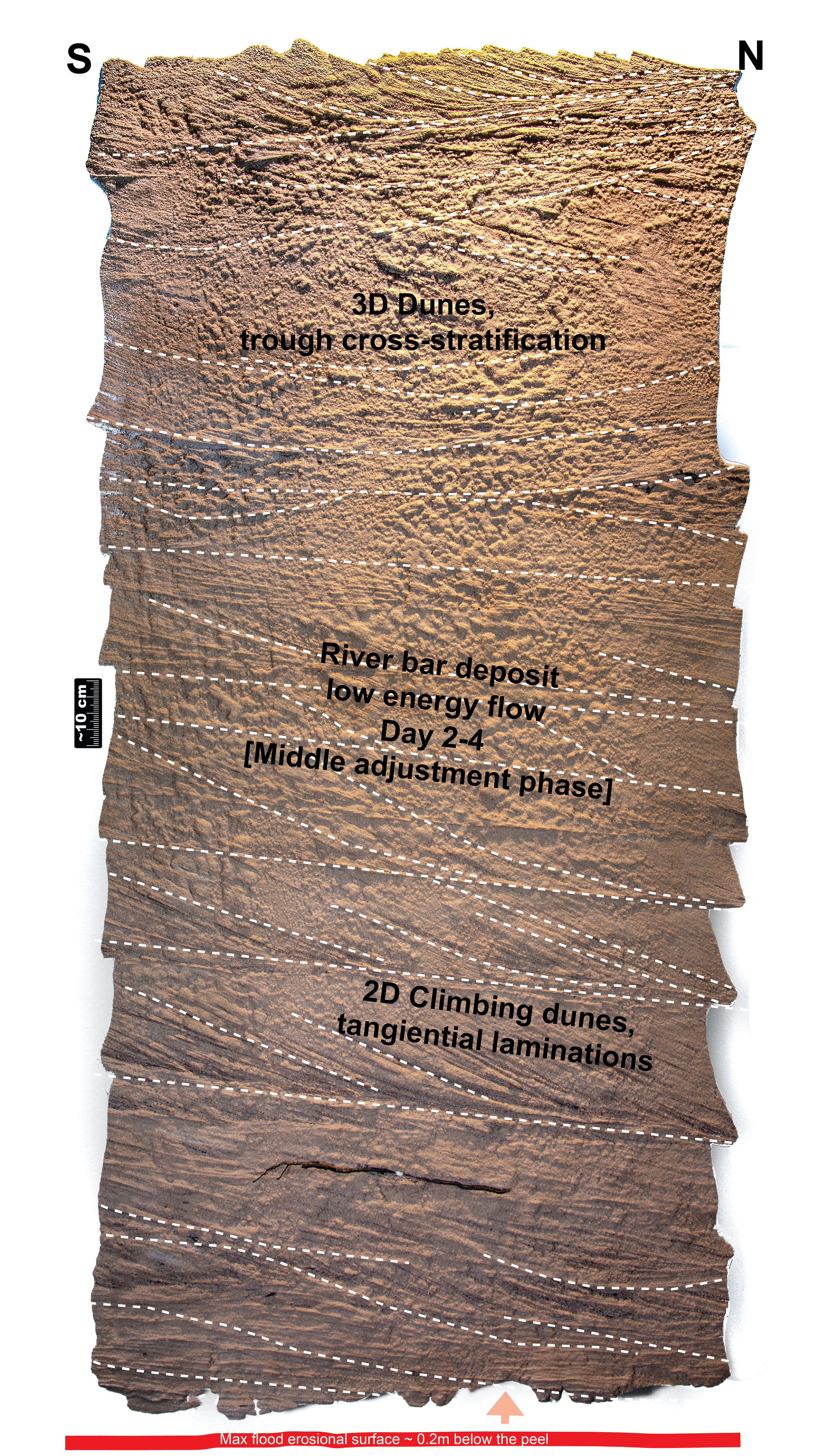Hurricane Harvey // Sand Peel Sculpture D
Plate 5A. Sand Peel Sculpture D
Context, Description, and Interpretation:
Peel D records deposition of sands during the middle adjustment phase. The hydrologic archive shows the water level dropping at a decreasing rate. During this time the human impact recorded by 211 calls was for immediate needs like food and shelter.
Summary: Peel D displays increasing energy and velocity through time demonstrated by a transition from mud and silt into fine to medium sand and the development of climbing dunes overlain by dunes containing trough cross stratification.
The package of strata at the base of Peel D contains low angle cross stratification, with layers of very fine, dark colored silt and clay within the fine to medium sand. This implies that this package was deposited under low energy conditions; the grain size variation is likely due to local variations in flow rate. Moving up section, the absence of mud or clay indicates increased velocity. More evidence for increased flow velocity is the deposition of climbing dunes with tangential laminations. There are nine clear packages of climbing dunes with planar cross strata; above these there is a transition to thicker packages with non-tangential laminations and trough cross strata, indicating a further increase in flow velocity. The red arrows indicate the easterly flow direction. Note: the maximum flood erosional surface is ~0.2 m below the base of the peel.
Event Timing
Transition from early to middle adjustment phase
August 30-September 1, 2017: This time period is at the transition from upper to lower flow regime. Throughout the period of upper flow regime the energy is decreasing; however, at the transition there is a slight increase and fluctuation in flow energy. Flow was to the east.

